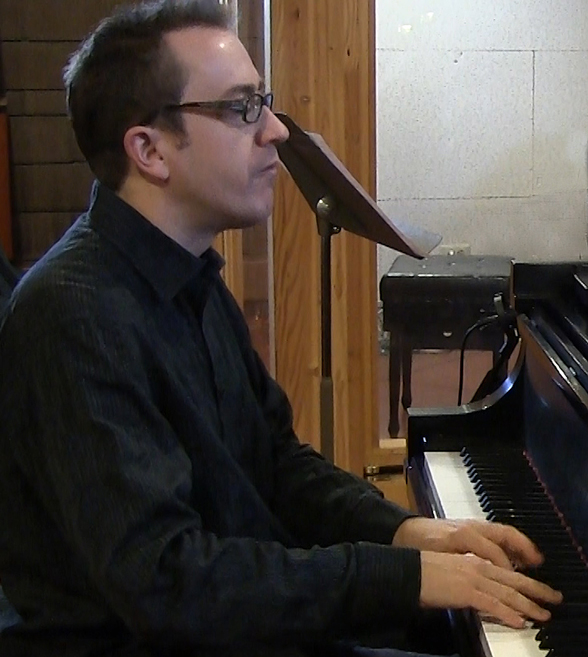With its laid-back swing feel and bluesy melody, Newborn Spirit is one of Geoffrey Keezer's most fun compositions and a great place to start exploring his distinctive style. It's got a classic soul-jazz feeling, updated with a few unexpected harmonies. The A section melody is entirely in the blues scale; it's punctuated with a little five-note hook before each of the three phrases, sort of a background "call" with a foreground "response." This hook is shown in our lead sheets with smaller notes, as it's not part of the main melody; in a setting with a horn player, the piano can play the hook to set up the melody. The bridge has no melody until the pickup to the last two measures; it's open for a solo.
The chord progression is related to, but not quite, "rhythm changes." The fourth measure has an unusual cadence descending in minor thirds: F7 to D7 to get back to A♭7. The bridge starts with four measures of D7 followed by two of G7; a further circle of fourths like the standard "rhythm changes" bridge is squeezed into the last two measures. Unlike most "rhythm changes" heads but like the original I Got Rhythm, there's a two-measure tag at the end of the C section—in this case ending on an unexpected G7(♯9).
There's an eight-measure pedal intro on the recording; our lead sheets show the piano melody here with smaller notes. Our E♭ lead sheet is written in a low register, but alto and baritone saxophonists have the option of playing it an octave higher.
Check out Piano Corner for details about the solo piano arrangement.
For another song from this
all-star tribute album to Phineas Newborn, Jr., check out
Fond Times With Junior by
James Williams, whom Keezer replaced in Art Blakey's Jazz Messengers. This was the 18-year-old Keezer's fourth recording. A week earlier, he had already recorded his second album as a leader, "
Curveball," which features another tribute to Newborn:
Waltz For Phineas. The following year, Keezer recorded "Here And Now," his third album as a leader, which like "Four Pianos For Phineas" features Billy Higgins on drums.
Geoffrey Keezer's own two-page solo piano arrangement is available. It's close to the original recording, but with a few differences; it consists of the head only without an intro. Like the recording, both the "call" and "response" of the A section are voiced in fourths in the right hand, with rhythmic left-hand hits. The left hand adds quarter-note "stride" on the sixth and seventh measures of the A section. The bridge has a written solo with a left-hand ostinato. This arrangement has detailed chord symbols showing the important extensions and alterations.


